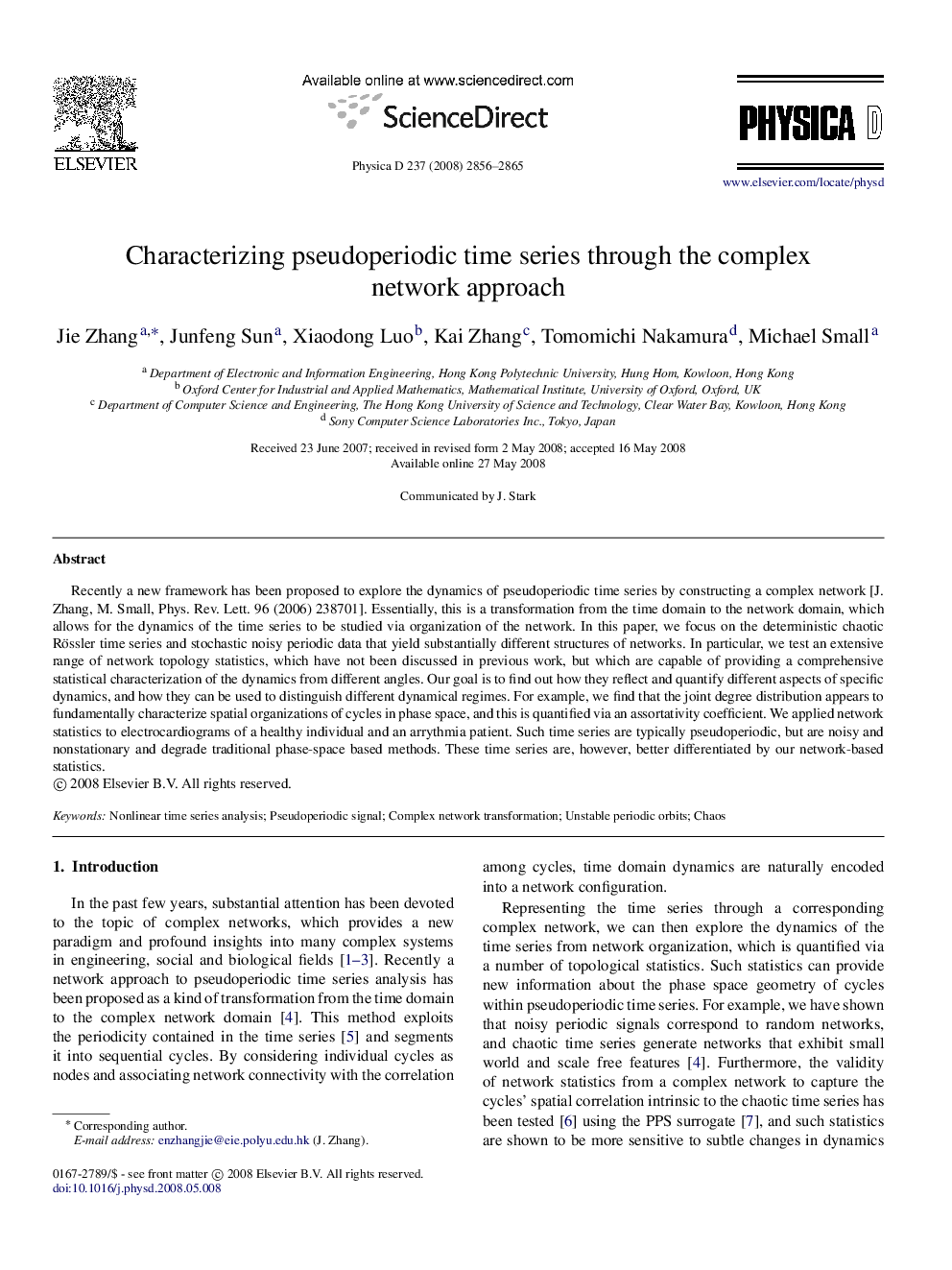| Article ID | Journal | Published Year | Pages | File Type |
|---|---|---|---|---|
| 1897787 | Physica D: Nonlinear Phenomena | 2008 | 10 Pages |
Recently a new framework has been proposed to explore the dynamics of pseudoperiodic time series by constructing a complex network [J. Zhang, M. Small, Phys. Rev. Lett. 96 (2006) 238701]. Essentially, this is a transformation from the time domain to the network domain, which allows for the dynamics of the time series to be studied via organization of the network. In this paper, we focus on the deterministic chaotic Rössler time series and stochastic noisy periodic data that yield substantially different structures of networks. In particular, we test an extensive range of network topology statistics, which have not been discussed in previous work, but which are capable of providing a comprehensive statistical characterization of the dynamics from different angles. Our goal is to find out how they reflect and quantify different aspects of specific dynamics, and how they can be used to distinguish different dynamical regimes. For example, we find that the joint degree distribution appears to fundamentally characterize spatial organizations of cycles in phase space, and this is quantified via an assortativity coefficient. We applied network statistics to electrocardiograms of a healthy individual and an arrythmia patient. Such time series are typically pseudoperiodic, but are noisy and nonstationary and degrade traditional phase-space based methods. These time series are, however, better differentiated by our network-based statistics.
